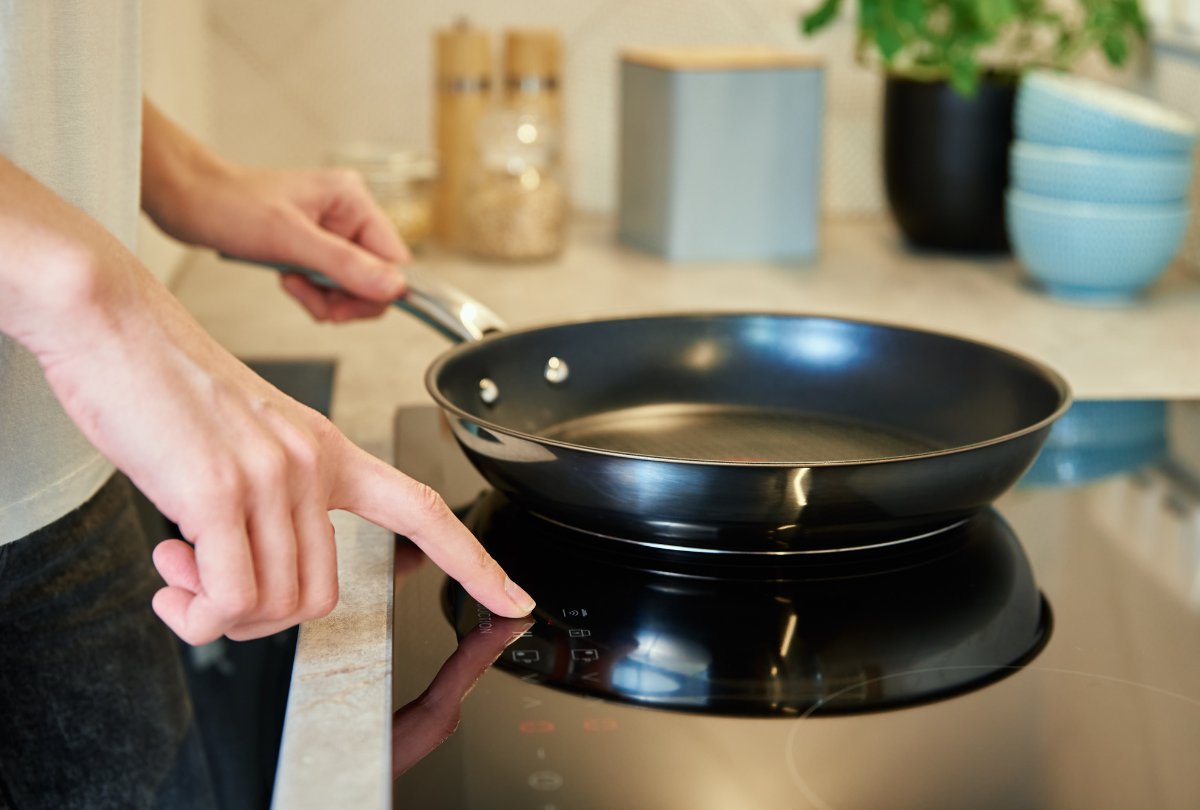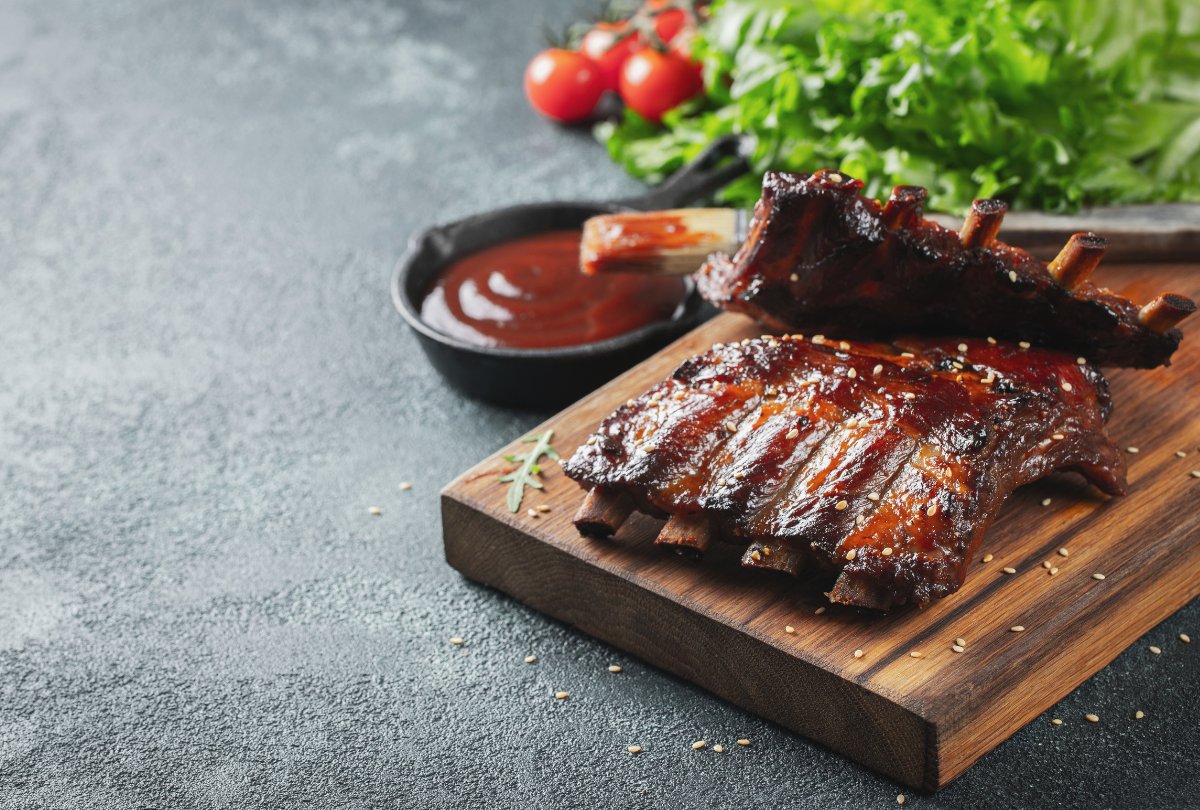Whether you're an experienced chef or just prepare meals occasionally, it's important to understand the differences between cooktop types. Two popular options are induction and ceramic cooktops. While they may seem similar at first glance, there are differences in their operation, features, and advantages and disadvantages. In this blog post, we'll delve deeper into the differences between induction and ceramic, so you can make an informed decision when buying a new cooktop.
[product=induction-frying-pan-set]
This three-piece induction frypan set combines the superior heat conduction of cast aluminum with an advanced Teflon™ Platinum Plus non-stick coating, making cooking not only easier but more enjoyable.
[/product]
What is an induction hob?
An induction cooktop is a modern, energy-efficient way of cooking that has become increasingly popular in recent years. It works very differently from traditional gas or ceramic cooktops. With induction, heat is generated not by gas or infrared radiation, but by electromagnetic induction. The cooktop contains copper wire coils, which are activated by an electric current. This creates a magnetic field that heats the pan, while the cooktop itself remains relatively cool. This not only makes for a very efficient and fast way of cooking, but also increases safety and ease of use in the kitchen.
[product=induction-warming-plate-kitchen-line]
The lifesaver: the Kitchen Line induction warming plate! With our Kitchen Line induction warming plate, you'll never have to worry about food cooling down again.
[/product]

What is a ceramic hob?
A ceramic hob is a popular alternative to gas and induction cooktops. Unlike a gas stove, a ceramic hob uses electricity to heat the cooktop. The surface of the hob is covered with a ceramic glass plate that evenly distributes the heat from the heating elements across the surface.
Similarities and differences between induction and ceramic
First of all, ceramic and induction cooktops are both easy to clean because there are no gas burners or open flames, so there's little difference between induction and ceramic. However, ceramic cooktops are generally less expensive than induction cooktops and are also easier to install, as they only require an electrical connection.
A major difference between induction and ceramic is the time the cooktops take to heat up. Ceramic cooktops take much longer to heat up than induction. Furthermore, the ceramic cooktop stays hot for a long time after being switched off, which can pose a risk of burns.
Comparison of the difference between induction and ceramic in technology
Induction and ceramic cooktops are both popular options in modern kitchens. But what are the differences between these two technologies? And which is better?
[product=grill plate for induction hobs]
This square grill plate with a round induction base ensures excellent heat distribution, so your dishes are grilled evenly and perfectly.
[/product]
A major difference between the two is how they generate heat. Induction cooktops use electromagnetic radiation to generate heat directly in the pan. This means the cooktop itself doesn't get hot, making it safer and more energy-efficient than other cooktops. Ceramic cooktops, on the other hand, work by passing an electric current through heating elements in the cooktop. This element then heats up and warms the pan.
Another key difference between induction and ceramic is the speed at which they heat up and cool down. Induction cooktops are known for their fast heat-up time and precise temperature control. Ceramic cooktops, on the other hand, heat up and cool down more slowly, making it difficult to maintain the correct temperature.
Another important aspect to consider is the type of cookware that can be used on each cooktop. Induction cooktops only work with magnetic cookware, such as cast iron or stainless steel. Ceramic cooktops, on the other hand, can use all types of cookware, but those with a flat base are the most suitable.
Difference between induction and ceramic in efficiency and energy consumption
Induction and ceramic cooktops differ not only in technology but also in efficiency and energy consumption. It's generally accepted that induction cooktops are more efficient than ceramic cooktops.
Induction cooktops generate heat directly in the pan through electromagnetic induction. This means the pan itself is the heat source, unlike ceramic cooktops where heat is generated by the plate and then transferred to the pan. This reduces heat loss and makes the induction cooktop more efficient.
Moreover, induction cooktops are very precise, allowing you to set the exact desired temperature and reach it quickly. This ensures less energy loss and lower energy consumption.
Ceramic cooktops, on the other hand, have a larger surface area and are often cheaper to purchase than induction cooktops. However, they generally have a longer heat-up time and are more difficult to precisely control the temperature. This can lead to higher energy consumption and reduced efficiency.
In short, induction cooktops are generally more efficient and consume less energy than ceramic cooktops. However, the purchase price of induction cooktops can be higher than that of ceramic cooktops.

Difference between induction and ceramic in cooking performance and suitability
Cooking performance and suitability are important aspects to consider when comparing induction and ceramic cooktops. Induction cooktops are generally considered superior in terms of cooking performance due to their direct heating effect and ability to reach very high temperatures. However, ceramic cooktops can still deliver excellent cooking results, especially at lower temperatures.
Ultimately, the choice between an induction and ceramic cooktop depends on personal preferences and needs. Induction cooktops are generally more efficient and offer better cooking performance, but require specialized cookware. Ceramic cooktops are more versatile when it comes to cookware selection, but generally have slightly lower efficiency.
What is better: induction or ceramic hob?
When choosing between an induction or ceramic cooktop, it's important to consider your personal needs and preferences. Both cooktop types have their advantages and disadvantages.
Induction cooktops are generally more efficient and faster at heating pans, and they are also more energy-efficient than ceramic cooktops. They work by using electromagnetic energy to generate heat within the pan itself, rather than heating the cooktop and then transferring the heat to the pan. This also means that induction cooktops are usually more precise and responsive than ceramic cooktops.
On the other hand, ceramic cooktops are often cheaper to purchase than induction cooktops and are more suitable for certain types of cookware, such as earthenware, glass, and copper cookware, which don't work on induction cooktops. Ceramic cooktops are also easier to clean than induction cooktops because they don't have separate induction coils that need cleaning.
When choosing between an induction and ceramic cooktop, it's also important to consider how much power you need. Induction cooktops have a higher wattage than ceramic cooktops, meaning you should check your power supply before installing an induction cooktop.
Induction cooking is generally considered the better option due to its efficiency and speed of heating, as well as its precision and responsiveness. However, if you're looking for a more affordable option and have a lot of cookware that isn't suitable for induction cooktops, a ceramic cooktop might be more suitable for your needs.



Leave a comment
This site is protected by hCaptcha and the hCaptcha Privacy Policy and Terms of Service apply.